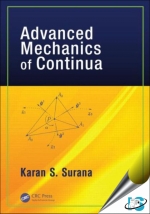Tab Article
Explore the Computational Methods and Mathematical Models That Are Possible through Continuum Mechanics Formulations
Mathematically demanding, but also rigorous, precise, and written using very clear language, Advanced Mechanics of Continua provides a thorough understanding of continuum mechanics. This book explores the foundation of continuum mechanics and constitutive theories of materials using understandable notations. It does not stick to one specific form, but instead provides a mix of notations that while in many instances are different than those used in current practice, are a natural choice for the information that they represent. The book places special emphasis on both matrix and vector notations, and presents material using these notations whenever possible.
The author explores the development of mathematical descriptions and constitutive theories for deforming solids, fluids, and polymeric fluids—both compressible and incompressible with clear distinction between Lagrangian and Eulerian descriptions as well as co- and contravariant bases. He also establishes the tensorial nature of strain measures and influence of rotation of frames on various measures, illustrates the physical meaning of the components of strains, presents the polar decomposition of deformation, and provides the definitions and measures of stress.
Comprised of 16 chapters, this text covers:
- Einstein’s notation
- Index notations
- Matrix and vector notations
- Basic definitions and concepts
- Mathematical preliminaries
- Tensor calculus and transformations using co- and contra-variant bases
- Differential calculus of tensors
- Development of mathematical descriptions and constitutive theories
Advanced Mechanics of Continua prepares graduate students for fundamental and basic research work in engineering and sciences, provides detailed and consistent derivations with clarity, and can be used for self-study.


